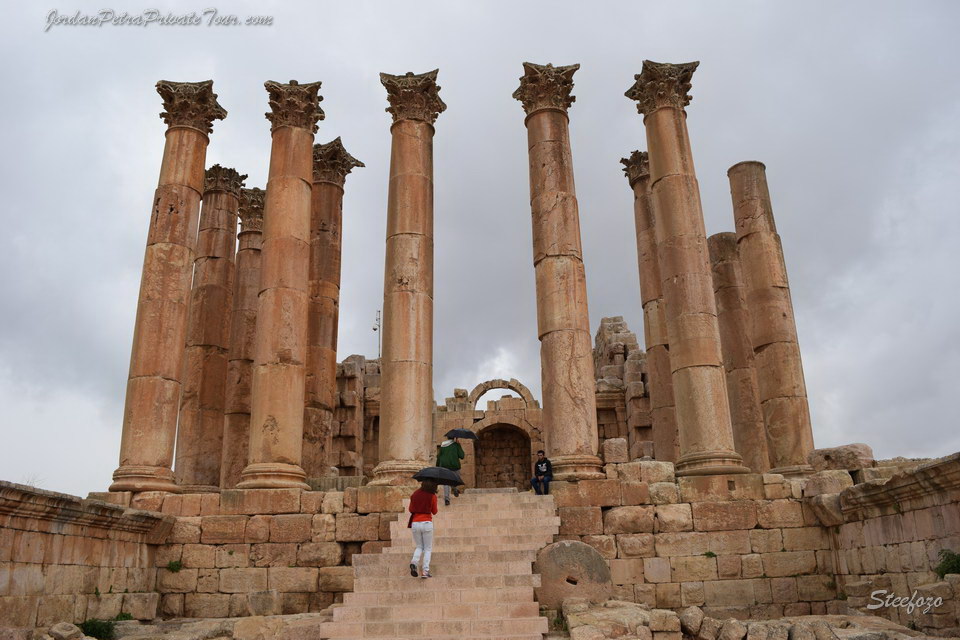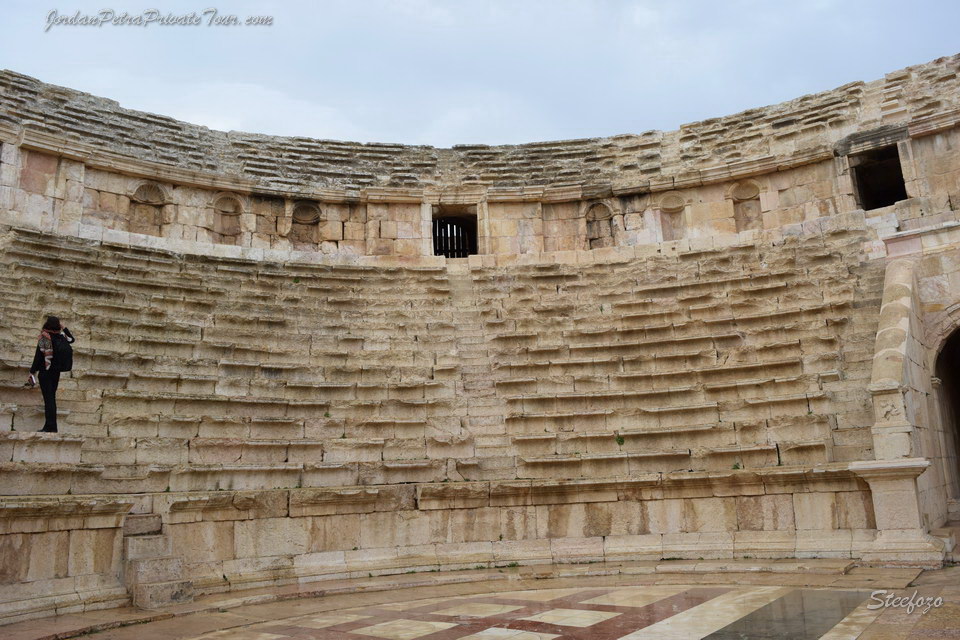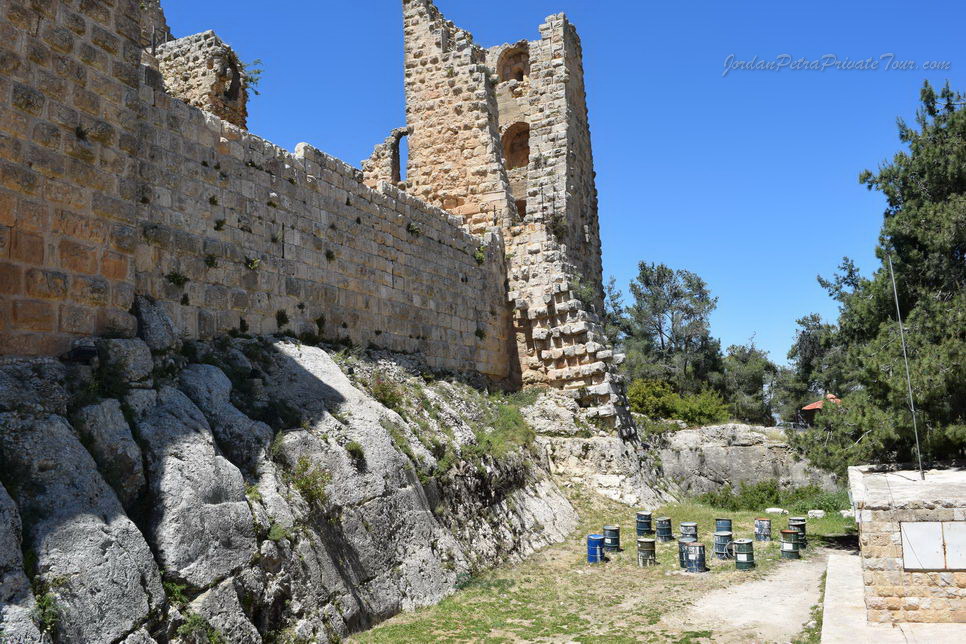Record added successfully



Come next to Petra when it comes to the top destination in Jordan is the city of Jerash, which features an endless string of human occupation dating back more than 6,500 years.
Rests on a plain enclosed by uneven wooden regions & fertile basins, the city of Jerash occupied by General Prompey in 63 BC, and it was 1 of the 10 great Roman cities of the Decapolis League.
The History of Jerash:
Jerash is perhaps among the best preserved Roman-age cities on the planet. Situated just forty kilometers north of Amman, tourists today can draw the chariot runnel on the Cardo, appreciate the mosaics that were placed contemporaneously to those discovered in Madaba, and scrutinize the sounds of the North & South Theatres. Occupied since Neolithic eras, Jerash came of age when Pompey swept through the area in 63 BC. Jerash turned out to be one of the biggest metropolises in the Decapolis amalgamation. Today’s cultural events such as the Jerash Festival & the Roman Chariot races, which take benefit of the exclusive setting & great audio of the refurbished theatres, bring back some of the bustle and excitement that should have marked Jerash during its prime time.

Jerash’s history can be traced by its name. The native Semitic residents in the first century BC called it "Garshu.” The Greeks discovered "Antioch on the Chrysorrhoea," or the Golden River, on the same site, naming it for the stream which runs through the region.
Book Your Tour Online Now
(Entry Fees & Tour Guide NOT included)
<!-=================================CheckFront Code==========================->
Searching Availability...
<!-=================================CheckFront Code==========================->
The Romans who came with Pompey changed the name to Gerasha to Garshu. You can find this name in Pliny’s Natural History when he talked about the Decapolis. In the nineteenth century, the Arabs and Circassians who resided in what was then a tiny, rural society changed the name to "Jerash.'
Jerash was connected to the business trails by a string of roads that led to other important business hubs such as Pella, Petra, Damascus, Bosra, and Amman. During the Pax Romana, Roman troops & global caravans were employed these roads, bringing new concepts & energy with them. Ruler Hadrian came in 129 AD & a victorious arch was constructed in his tribute close to the Hippodrome. The tallest of the 3 arches was 13m high & initially, all 3 had wooden doors. At present, the Arch still stands & is in the last stage of refurbishment. The brainwave of these visitors is mirrored in these stunning constructions.
Emperors Trajan & Hadrian, during the 1st half of the second century, encouraged the constructions of many buildings which still exist.

Jerash earned affluently from iron mining in Ajlun, agricultural activities on the nearby plains, and charging taxes on businessmen coming through the region, much like customs duties charged now. Nevertheless, inscriptions on most of the constructions, most importantly on the South Theatre, signify that individuals & guilds donated cash to assist fund the building. For instance, a person named Titus Flavius, son of Dionysius donated many of the seats in the Theatre. With a feasible occupant of nearly 25,000 people, there might have been a massive sum of money for public architecture.
Ajloun Castle:
Ajloun Castle is perhaps the best instances of Islamic Ayyubid martial construction. The 1st phase of building started by General Izzidin Usama, nephew of Salahuddin AL Ayyoubi, who constructed it on a hill 1100m above ocean level. The primary building includes a solid nucleus stranglehold with 4 prominent towers. Consecutive enlargements pursued instantly with the incorporation of 2 more towers amid 1184 and 1193 AD. Between 1193 & 1218, during the times of AL Malek Al Adel, the 2nd phase of building was finished with amplification by the castle ruler Aybak Bin Abdullah. He incorporated the 7th tower, which drapes around the southeast corner of the structure.
Stage 3 of building focused on the restoration of the northeast tower when the stronghold was employed as the governmental center during the control of AL Malek AL Nasser Salhudin Yousef between 1250 and 1259.

Trip Itinerary :
Jerash City and Ajloun castle Tour
The Trip starts at 08:00 – Hotel Pickup
09:30-10:30 Ajloun castle visit
Lunch Time 11:00-12:00
13:00 – 16:00 Jerash City and Ruins visit
17:00 Hotel Drop Off at Amman
Jerash & Ajloun Castle Full Day Tour Highlights:
• Jerash city & Ajloun Castle Full Day Private Travel Tour From Amman.
• Pick up & Drop Off can be scheduled from Amman International airport with extra charges of (30-50 US$) - Except Petra Trip "Free Airport pickup-Drop off".
• English Speaking driver..
• Home / Hotel Pick-up and drop-off
• Entry Fees, local sites tour guides, meals, and tips are not included.
• A modern vehicle with AC is used.
• Main tourism sites like Petra, Jerash, Umm Qais, & Nebo are self-guided (Local Tour guide can be used if desired)